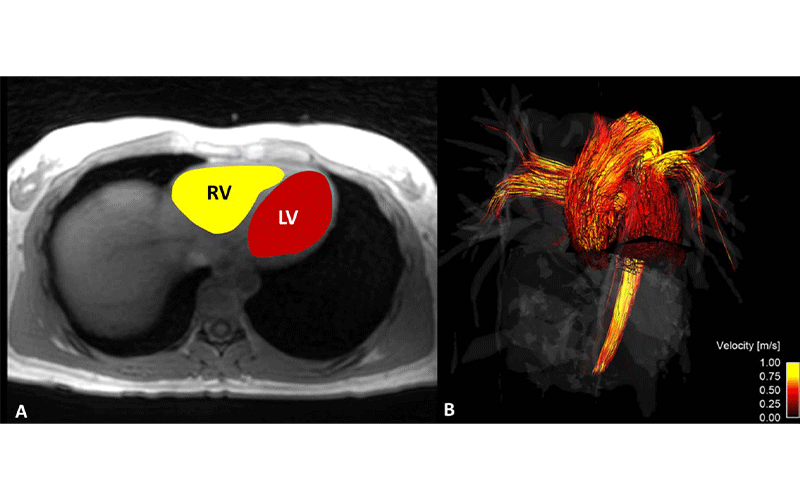MRI Shows Blood Flow Differs in Men and Women
Results can create gender standards during assessment of cardiac performance

Healthy men and women have different blood flow characteristics in their hearts, according to a new study published in Radiology: Cardiothoracic Imaging.
Differences in the hearts of men and women have long been known. For instance, women’s hearts are smaller in size and beat faster than men’s, on average. However, much less is known about the way that blood flows through the hearts of men and women and how that relates to cardiac performance.
For the new study, researchers used 4D flow MRI to study gender differences in the left ventricle. They derived various blood flow parameters from MRI scans obtained from 20 men and 19 women and correlated them with cardiac function.
The data showed some significant differences between the genders. Kinetic energy, which is one indicator of energy expenditure during contraction and filling of the heart, was significantly higher in the left ventricles of men. Vorticity, a measure of regions of rotating flow that form during different points of the cardiac cycle, was higher in women, as was strain, a measure of left ventricular function.
“Using the MRI data, we found differences in how the heart contracts in men and women,” said study lead author David R. Rutkowski, PhD, postdoctoral researcher at the University of Wisconsin in Madison. “There was greater strain in the left ventricle wall of women and a higher vorticity in the blood volume. We hypothesize that these two things are related.”
Data Could Provide Numeric Information for Cardiac Events
The study and the methods it employed have a number of potential applications, Dr. Rutkowski noted, including improved understanding of why the hearts of men and women respond differently to physiological stresses and disease. The results also add information that might one day improve clinical assessment of the heart.
“These blood flow metrics would be useful as reference standards because they are derived from healthy people, so we could use these to compare with someone who is unhealthy,” Dr. Rutkowski said.
Dr. Rutkowski emphasized that the ability of 4D flow MRI to provide numbers for various blood flow parameters is especially important.
“There’s been a push in the last couple of decades to make MRI more quantitative,” he said. “So instead of looking at something and saying it looks normal or different, we can get a number to go with that visual information.”
The researchers are currently using 4D flow MRI to look at patients with atrial fibrillation. Their hope is that MRI will help detect patterns and relationships in the atria similar to those found in the ventricles.
“The goal of our work in general is to move from qualitative MRI to more quantitative MRI,” Dr. Rutkowski said. “Getting blood flow and velocity information is just one more metric that is being developed to make MRI more quantitative.”
For More Information
Access the Radiology: Cardiothoracic Imaging study, “Sex Differences in Cardiac Flow Dynamics of Healthy Volunteers.”
